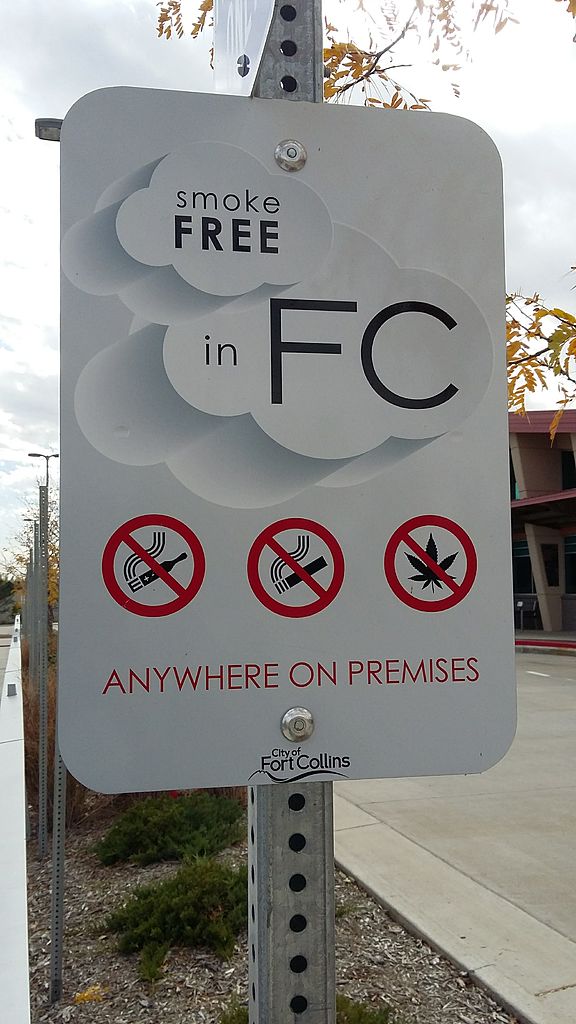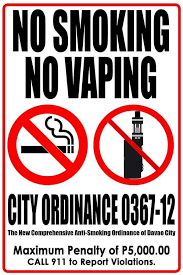BACK TO TABLE OF CONTENTS
This page covers:
- Safety first
- TPW
- Recommendations before going out into the field
- Selecting the amenities to observe
- Three Required and additional park amenities
- Park amenity definitions and examples
- Signage and ashtray definitions and examples
- Setting up the observation area
- Exposure to active smoking
- Identifying the sidewalk/street segment
- Selecting sidewalks for Wave 2 data collection
- Examples of building setback from the sidewalk
- High TPW counts will need to be confirmed with TCEC
Safety first
Safety always comes first. CTCP created this safety tip sheet for all data collectors working on this project. If you are approached, there is a script for introducing yourself at a park or sidewalk and letter you can use to help explain what you're doing. Ask your LLA for the letter you can use.
TPW
TPW is short for tobacco product waste. You will see this term throughout the park and sidewalk observation survey. Please see Setting up the observation area for more details and instructions
Recommendations before going out into the field
Ideally, observations should be conducted before a park is cleaned. You may want to contact the parks and recreations department in your community to find out the cleaning schedule of the parks in your sample.
Use online maps or websites to give you an idea of the park make up, scope out general locations of the amenities, choose a good place to safely access the park, or determine best parking situation to especially for large parks.
Selecting the amenities to observe
There are several amenities for you to visit to complete the observation. If there are multiple places of the same amenity, select the amenity that is most likely to have TPW. Spend no more than 1-2 minutes searching for the amenity. You may want to find a site map or do an online search to get a general layout of the park.
The survey will prompt you to go to different amenities and ask if you are able to access the amenity for observation. There are three answer options:
- Yes, the amenity is there, and I can observe it
- Select this option if the park has the amenity, and you can observe it.
- Yes, there are other amenities, but I cannot observe it. Explain why not: __________[skip to next amenity]
- Select this option if you cannot observe it, then enter the reason why you cannot observe it. Common reasons include construction, maintenance, or wanting to be respectful of other people there. If there are others present, you have the option to introduce yourself and proceed with the observation. However, you you do not feel safe to do the observation while others are present, then select this option and explain that you want to be respectful of other people there.
- No, the amenity is not there [skip to next amenity]
- Select this option of the park does not have the amenity. The survey will prompt you to move on to the next amenity.
3 Required and additional amenities
To streamline the data collectors effort and time in each park, data collectors must observe three required amenities and at least one optional amenity.
The three required amenities for observation are:
- Playground area
- Picnic tables area
- Restroom area (NOT inside the restroom, just the outdoor area near the restroom)
One or more of the optional amenities to observe are:
- Sports field
- Athletic court
- Parking lot
- Another amenity you want to observe e.g. entrance area, skate park, near the water, etc.
Your Lead Contact may want you to focus on a specific amenity. Ask your Lead Contact for additional guidance.
Amenity definitions and examples
Playground or play area: Generally, an area with playground equipment, such as slides, play structure, and/or swings.

Picnic tables or picnic shelter: Any area with picnic tables or with a covered, permanent shelter area for shade. The example below is a shelter. Shelters may or may not have picnic tables already installed.

Restroom area: Any permanent restroom structure or cluster of portapotties or outhouses. The observation should take place OUTSIDE in the area near the restroom, NOT inside the restroom.


Sports Field: Common types of sport fields including baseball fields, softball fields, football fields, or any other area where sports are played that would have “field” in their name (as opposed to a “court”).


Sports Courts: Common types of athletic courts include tennis courts, basketball courts, volleyball courts, or any other area where sports are played that would have “court” in their name (as opposed to a “field”).

Parking Lot: Parking lots should be within the park boundaries. Do NOT count street parking as a parking lot.

Amenity of your choice: Includes any outdoor area in the park. The amenity of your choice should be a place that is likely to have TPW. If there were two playgrounds and you wanted to do an observation at both playgrounds, then the amenity of your choice can be playground #2. If there was another part of an amenity you’ve done before, this amenity of your choice can be that area. If there’s another part of the park that isn’t listed like near the entrance, by the skate park, by the water feature, etc. then that can be the amenity of your choice.
Signage and ashtray definitions and examples
Park Rules: Park rules are usually located near main entrances to parks and may or may not have rules about smoking or vaping

No Smoking or Vaping: Signs with no smoking and/or no vaping may use symbols (e.g., cigarette with a slash through it) or be written to say, "No smoking or vaping," or something similar to convey that smoking and/or vaping are not allowed.






Designated Smoking Area: Any sign that shows where smoking or vaping are allowed.



Ashtrays: These should be clearly intended for use to deposit cigarette butts. They can be connected to a trashcan or standalone. A smokers' post is typically a metal or plastic tube where people deposit their lit cigarettes and they are extinguished at the bottom of the pole in a larger receptacle that cannot be easily accessed. Do not count general trash cans used for everyday trash.



Setting up the observation area
Questions that ask you to count the number of pieces of tobacco product waste should be done in an area that is at least 100 sq ft.
To set up the observation area, scan around the amenity that appears to have the most tobacco product waste. Spend no more than a few minutes to select an area for observation.
Using a tape measure or the strides method, identify a 100 sq ft area that includes some tobacco product waste. The easiest way to do this is to create a square that is 10 ft wide and 10 ft long. Then count the number of pieces of tobacco product waste in that square area.
For the next questions about signs, ashtrays, and exposure to smoke, stay in this 100 sq ft area and look for signs or ashtrays from that area. The signs or potential exposure do not need to occur within the observation area, but ideally you will physically stay within the observation area. If you need to take a step or two out, that's fine. The intent is that you do not need to walk around the entire amenity.
The strides method is illustrated below. To measure the data collector's 10 ft stride length, count the number of steps it takes to cover 10 ft. In the example, it takes a little more than 5 steps to cover 10 ft. The data collector will walk about 5 steps, turn 90 degrees and then walk another 5 steps. This creates the 100 sq ft area.

Another way to measure a 100 sq ft area is to create a 20ft by 5ft area. This might be necessary especially for sidewalk observations. Below is an example of how to create the observation area using the strides method. The data collector will walk about 12 steps, turn 90 degrees and then walk another 3 steps. This creates the 100 sq ft area.

There are many other ways and shapes you can use to create a 100sq ft area, but these are the most straight common and straightforward dimensions to use. Our hope is that you do not need to do math to calculate this area and will instead use these common measurements to create a 100 sq ft area.
Exposure to active smoking
In each amenity, you will be asked to count how many times you saw or smelled tobacco smoke, tobacco vapor, marijuana smoke, or marijuana vapor during your observation in the 100 sq ft area. The signs or potential exposure does not need to occur within the observation area, but ideally you will physically stay within the observation area. If you need to take a step or two out, that's fine. The intent is that you do not need to walk around the entire amenity.
The purpose of this question is to capture how many times you were exposed to tobacco or marijuana smoke or vapor. Because of this, you might count the same person or people in multiple amenities, because exposure happened in multiple amenities.
- An individual smoking or vaping by themselves counts as 1
- A group of people smoking or vaping counts as 1
- A group and an individual separately smoking or vaping counts as 2
- If you see the same person/group smoking or vaping later in the observation at a different amenity, you will also capture that exposure (i.e., double count).
Do not count people smoking or vaping in their vehicles. This question is about outdoor second-hand smoke exposure.
If there was an exposure, then a follow up question will ask if the people were smoking or vaping where they could be seen by other people.
Select Yes if others were close enough to see or be exposed to any secondhand smoke or vapor from when you saw or smelled smoking smoking or vaping. Select Yes if there were multiple people smoking in a group. Select No if you were likely the only person to have seen the person smoking or vaping.
The purpose of this question is to see if others (besides you), were also exposed. Sometimes people assume it is ok to use tobacco or marijuana if they see others using. It can also be a trigger when seeing others use tobacco or marijuana, too.
Identifying the sidewalk/street segment
The first 3 questions of the sidewalk observation survey are meant to identify the sidewalk being observed. Use the example photo below or listen to the recorded training for the sidewalk observation survey.

Q22 of the sidewalk observation survey asks you to enter the street address nearest to the observation area. Using the example picture below, if you’re in front of this brick building, enter 180. If you’re in front of the green building, enter 178. If you’re across the street and there aren’t any visible addresses, then you can estimate that you’re in front of 179. If there are no building numbers, use the block number on street signs.

Selecting sidewalks for Wave 2 data collection
New Sidewalks guidelines for Wave 2 data collection
Visit the same sidewalks that your data collection team observed in wave 1. The streets and cross streets are included in the sidewalk list provided by CTPP. For questions 1-3, enter the street name and cross streets EXACTLY the same way it appears on your list. Most have abbreviations and no periods or dashes.
When it comes to question 22-23, you do not need to set up the 100sqft area in the exact same spot. Instead, scan the sidewalk area and select an area that appears to have the most tobacco product waste. Then use the strides method or a tape measure to set up a 100sqft observation area.
If the sidewalk that your data collection team visited in wave 1 is not available to be observed this time (under construction, could not find, could not access, etc.) then a replacement sidewalk can be selected. Additional sidewalks beyond what was observed in the first wave can also be added to the observation for wave 2.
In addition, it is helpful to conduct the observation during similar weather conditions in both wave 1 and wave 2. You can briefly look over your sidewalk list and get a general sense of the weather conditions so that you can select a day to go that has similar weather conditions.
Examples of building setback from the sidewalk
Question 14 is asking how much space there is between the front of the buildings and the sidewalk on this segment of the street. If the amount of space differs, use your best guess to determine the overall average distance for the entire segment. You don’t need to get an exact measurement here, and different buildings would be a different distance away. You just want a general measurement.
At edge:

Within 20 ft:

More than 20 ft:

No buildings:

High TPW counts will need to be confirmed with TCEC
Please convey to your data collection teams that a high count or a low count isn't a "good" or a "bad" thing. Instead, we are aiming for accuracy with TPW counts. If there is a high TPW count, it will need to be confirmed with TCEC through field notes or pictures. This is to prevent any accidental typos and ensure than TPW counts over 30 weren't entered in error. It would be helpful for data collectors to document this in the field notes form or in the last question of the observation survey. If the device allows, pictures are also helpful to collect.
Back to Table of Contents
Many pictures and survey content was adapted from:
Sidewalk Observation Survey Training Clifton, K. J., Smith, A. D. L., & Rodriguez, D. (2007). The development and testing of an audit for the pedestrian environment. Landscape and urban planning, 80(1-2), 95-110.
Healthy Hawai’i Evaluation Team (2016). Pedestrian Environment Data Scan (PEDS) Audit Protocol. Honolulu: University of Hawai’i at Manoa. (adapted from Clifton et al.)
